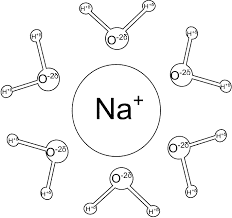Will Sodium-Ion Batteries Replace Lithium-Ion Batteries . . .
before Advanced Air Mobility even takes off?

The ‘e’ in eVTOLs – electric – has, from the outset of advanced air mobility (AAM) relied on lithium-ion batteries to power the aircraft. But, if scientists from the U.S. Department of Energy’s Seattle, Washington-based Pacific Northwest National Laboratory (PNNL) succeed in their efforts to develop a sodium-ion battery, the result could be a real game-changer for AAM, indeed all electric vehicles.

The Salt of the Earth – and Sky
The problem, until now, has been the poor durability of sodium-ion batteries. But Dr. Zhang and team seemed to have solved that issue, among others.
Additional advantages of a sodium-ion battery include:
- Whereas a lithium-ion battery cost an average of US$137 per kilowatt hour (KWh) of capacity, sodium-ion batteries are proving out at between US$40-$77 per KWh.
- Compared to a lithium-ion battery’s volumetric energy density of 200-683 W h/L, sodium-ion battery prototypes are coming in at 230-375 W h/L.
- The safety risk of lithium-ion batteries is classified as “high-risk; in the aqueous batteries the PNNL are studying, the risk is “low.”
- Whereas lithium is scarce, sodium is “earth-abundant.”
Salt was once so valuable people were paid for their labor in salt. The word salary is derived from the word salt. Could it be that someday soon our eVTOLs will be powered by a version of the very same mineral we’ve been using to flavor our meats and vegetables for millennia? Could be.
Subscribe to AeroCar Journal today, (it’s free for a limited time). Follow us on Facebook, Twitter, and LinkedIn. Visit the Vertical Flight Society for the most comprehensive directory of eVTOL aircraft directory


